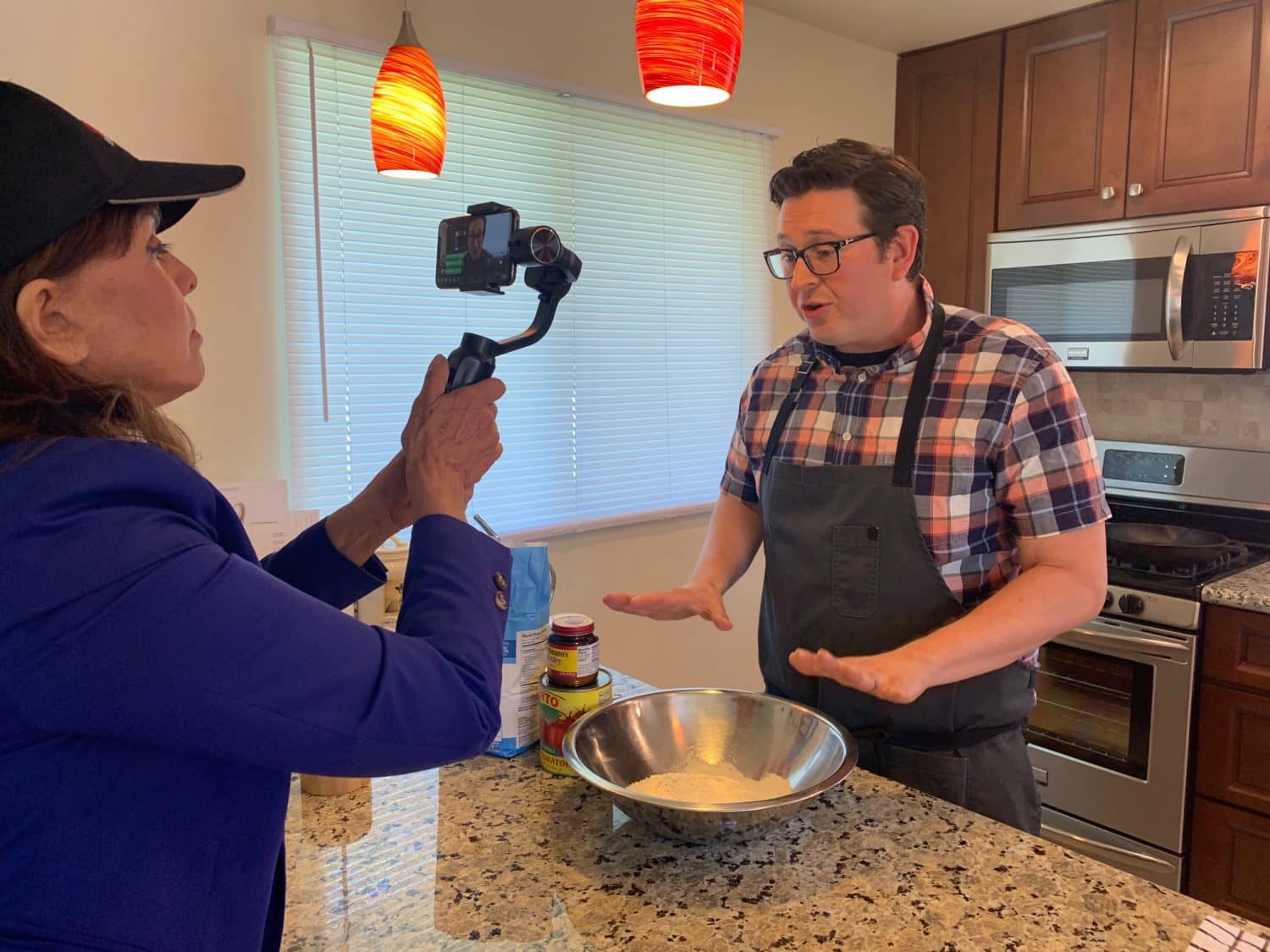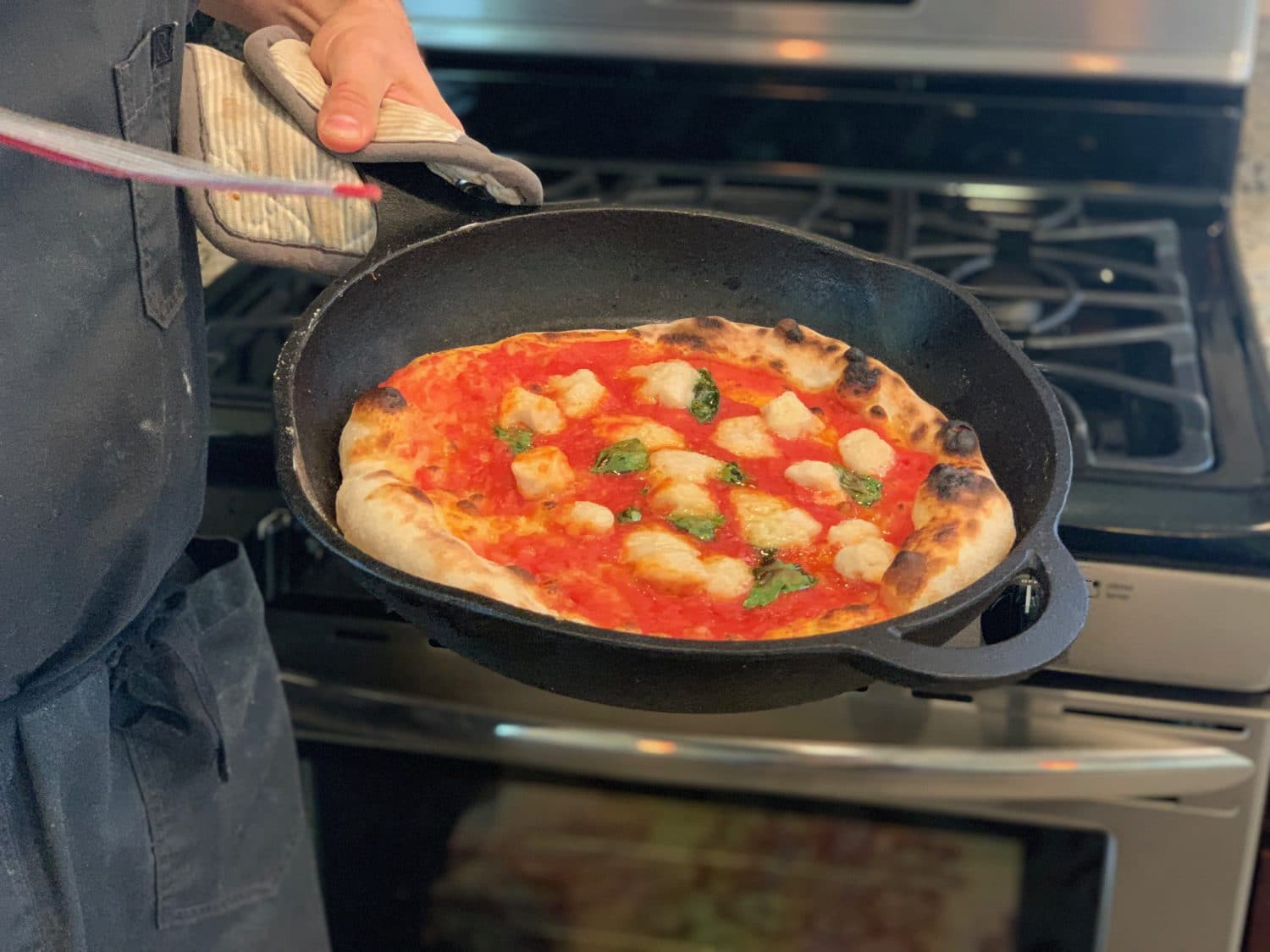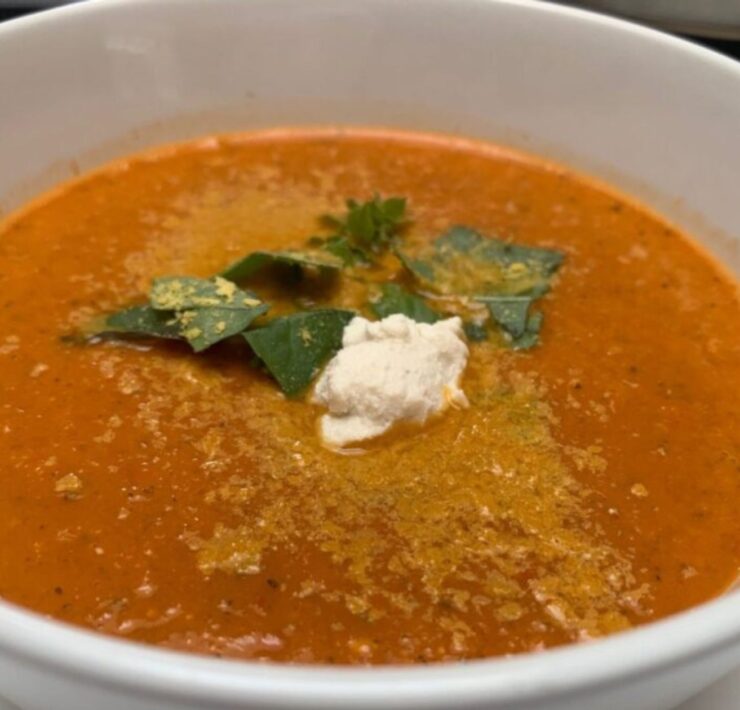Pizza! Pizza! Pizza! Do I Have Your Attention?

#LunchBreakLIVE with the amazing Brian L. Patton: The Sexy Vegan! Brian is a vegan chef, cookbook author, recipe developer, and multimedia personality. With over a decade of experience in the vegan food industry, Brian brings his knowledge, skill, and recipes to the plant-based movement! Check out his Instagram account: @thesexyvegan Get his recipes at thesexyvegan.com & 99publishing.com
If you want more GREAT vegan recipes you must visit The Sexy Vegans website. He has so many amazing recipes on there I could not believe it. Most of the recipes also include videos to go along with them, which is awesome.

Now, let’s check out some of the fun photos from the #LunchBreakLIVE episode with The Sexy Vegan himself.




The Sexy Vegan also has several e-cook books he offers. You can check them out HERE.

DRUMROLL PLEASE…..THE PIZZA RECIPE…
325g warm water
1g active dry yeast
500g Caputo “Tipo 00” flour (or bread flour)
13g fine sea salt
Extra virgin olive oil
In a large mixing bowl, combine the yeast, flour, and salt. Mix until combined.
Add the water to the flour, and mix with a spoon or your hand until all of the flour is worked into the dough and there are no dry spots remaining.
Add a touch of olive oil to another large bowl or large (at least 3-quart) plastic food storage container with a lid, and work the oil around with your hand to lightly coat the inside. Place the dough in the bowl or container, turn to coat with oil, and cover with plastic wrap or the lid. Let it rest on your counter for 8 to 12 hours, until more than doubled in size.
Turn the dough out onto a lightly floured surface and cut it into four equal portions. The best way to do this is to weigh the entire ball in grams, then divide by four. Divide the dough accordingly, adding or removing little pieces of each dough ball to get the exact weight. You’ll end up with just over 200g per ball.
Form each portion into a ball and place them in separate, lightly oiled, 1-quart containers with lids, bowls covered with plastic wrap, or zip-top bags. Stash in the fridge for at least 72 hours, or up to 96 hours if you have a little more patience. The longer the cold ferment, the more flavor will develop.
About 2 hours before pizza time, remove the dough from the fridge, gently re-shape it into a ball, and place on a lightly floured surface. Sprinkle a little flour on top of it and cover with a damp towel. It needs about 2 hours to come to room temperature.
If you’d like to freeze the dough balls, you can do so after the cold fermentation. Place the balls on a plate or pan lined with parchment and place in the freezer until frozen solid. Then move to a zip-top bag and freeze for up to 2 months. When you want to use one, simply remove from the freezer and place on a floured surface covered with a towel or plastic wrap and let sit at room temperature for 5 to 6 hours, until it’s soft and has no chill.
Making the Pizza
4 dough balls at room temperature
8 ounces “buffalo”-style fresh vegan mozzarella
1 (28-ounce) can peeled San Marzano tomatoes
1 teaspoon salt
1 cup fresh basil, torn
Extra virgin olive oil
flour for dusting your work surface
Pour the tomatoes into a food processor or blender, and add salt. If using a food processor or regular blender, pulse multiple times until smooth. If using a high-powered blender, blend on a low setting until smooth. If you blend it too intensely for too long, you’ll incorporate air bubbles into the sauce, thus diluting the flavor. Transfer to a bowl.
Heat a dry, 12 to 14 inch cast iron skillet to high. Arrange an oven rack to the highest level just below the broiler (making sure there’s enough room for the pan to fit in there). Heat broiler on high.
Lightly flour your work surface and your hands. Place a dough ball on the work surface, and gently press the dough out from the middle with your hands. Don’t press all the way out to the edges, and don’t use a rolling pin, because you want that outer crust to be puffy. Make sure there is about a ¾-inch perimeter that does not get pressed or flattened out. Gently turn the dough as you press it out to make sure it stays relatively circular, and coat your hands and work surface with extra flour if it starts to stick.
Once the crust is established, gently stretch the dough, by placing your right hand on the right side of the dough to anchor it down, and pull the opposite side of the dough away from your anchoring hand. Then turn the dough 1/4 turn counterclockwise and stretch again in the same manner. Repeat 4 to 8 times until the dough is a diameter of 12 to 14 inches.
Pick the dough up and place it on the back of your hands. Place it in the hot skillet. Working quickly, apply the sauce, leaving the ¾-inch crust bare.
Spread the basil out evenly over the sauce.
Pinch off pieces of the mozzarella, and spread them evenly on top. Drizzle a touch olive oil over the pie. I usually go with a clockwise swirl, but you could go with a zig-zag, or a chaotic squizzle (that’s fancy chef talk).
Now that the dough has been in the pan for about a minute, using a thin spatula, lift one side of the pizza up a little to check underneath. If you don’t see tiny browned or blackened spots on the underside of the dough, they will appear within the next minute, so cook it 30 more seconds and check again.
Once you see the spots, transfer the skillet under the broiler. Pull the pizza out after 1 minute, if the crust is browning unevenly, or the cheese is melting unevenly. Turn the pan, or move it a little to one side or the other. This depends on the oven and how evenly your broiler cooks. The total cooking time under the broiler will be no more than two minutes.
Once the cheese is bubbly and there are blackened and browned spots all over your puffy crust, your pizza is done.
Remove the pan from the oven and use a spatula to immediately remove the pizza from the pan. Serve immediately.
ENJOY!
What's Your Reaction?
Donna Dennison is an UnchainedTV writer, graphic designer, video editor, and IG contributor. Donna is also a creative in the film industry.









